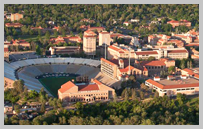Body
Department Body
The Budget and Finance Office is the university's liaison to the Board of Regents on matters related to budget policy. The office directs the development of the annual university budget, provides information for internal planning and decision-making, assists in the development of legislative strategy and advocates for funding priorities with Colorado's policy makers.
Affordability & Student Financial Aid
Even in times of uncertainty, a college education continues to be an investment worth making. On average, people with bachelor’s degrees earn $1.5 million dollars more over their working lives, experience lower unemployment and are healthier than those who do not graduate from college. Visit the following web page that outlines CU’s commitment to affordability, including how we keep tuition in check, continue to fund student aid, reduce out-of-pocket costs, and other factors that affect your investment in your future. Go to cu.edu/affordability
Video: Student Financial Aid
A college education is an investment worth making. While students invest in their future, CU invests in its students to ensure that all qualified Coloradans can afford a CU education. Providing institutional grants and scholarships lowers costs and helps reduce debt upon graduation. CU’s investment in grants and scholarships continues to increase, awarding more aid than the state of Colorado spends on aid across the entire state.
For additional data and information about Student Financial Aid, visit cu.edu/student-financial-aid or review the most recent presentation to the CU Board of Regents. For general information about CU, visit our CU Data Made Simple page.
Video: How Does CU's Budget Work (FY 2025-26)
The Budget and Finance Office assists the Board of Regents, executive management team, and the university community in attaining their goals by compiling and disseminating information for planning, budgeting, management and accountability. It develops university-wide budget parameters in collaboration with campus leadership, the Board of Regents and state policymakers. It is the primary fiscal liaison to state agencies and coordinates universitywide financial reporting to internal and external constituents.
The office includes Capital Construction and Planning and Institutional Research.
- The Capital Construction and Planning unit coordinates university-wide capital construction activity and reporting for external entities. It also provides support for the Design Review Board and the Regents Capital Subcommittee, and maintains core data on CU capital construction activities.
- The Institutional Research (IR) unit coordinates with the IR offices on each CU campus to provide data and analyses on students, faculty and staff, and other topics of interest to internal and external constituents.




